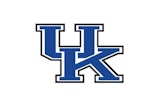Computer videotape editing, which arrived on the scene in professional football just five years ago, is now within the financial reach of high school and college programs
Vince Lombardi might have disdained the use of computers. You can almost hear him: Good blocking and tackling are all you need to win football games. Then again, a 1992 version of the legendary coach might say that no useful tool should be overlooked in the quest for success — and computers have unquestionably become indispensable tools in almost every walk of life.
Athletic departments, by and large, have been as quick as most organizations in bringing computers into their operations. Besides adopting standard business software like spreadsheets and word processing, sports administrators are also using custom programs that have been developed to meet the specialized needs of sports. Scheduling and recruiting software has become common and now there are even programs that trainers can use to monitor and treat injuries and others that help coaches diagram plays.
The most visible and dramatic impact of the computer revolution may have been felt in the realm of game preparation — an area that demonstrates how quickly technology can create change.
As recently as six years ago, most football coaches at all levels prepared their teams using 16mm film of their own and their opponents’ previous games. However, in 1986, the National Football League converted to videotape and major colleges soon followed. Today, 16mm film is all but obsolete in football.
Two of videotape’s advantages over film are obvious: It’s cheaper to buy and available immediately after the game, whereas film has to be sent off to be developed — another cost.
The ability to edit videotape more easily than film as proved to be an even bigger advantage, and the marriage of two technologies — videotape and computers — has dramatically altered the way coaches prepare for games.
Using videotape recorders, a standard personal computer and video editing software, coaches can now have games broken down into specified groups of plays for easier analysis. For example, a defensive coach can ask to have the computer select all the plays in which an opponent’s offense faced third down and long yardage. An offensive coach can have the computer prepare a tape showing how an opponent’s defense reacts to various offensive situations. Edited videotapes (or cut-ups) are made from the master tapes and distributed to coaches, according to their specifications.
All NFL teams and virtually every NCAA Division I-A team now has some form of computerized video editing system. These elaborate systems can cost anywhere from $200,000 to $500,000 — including video camera equipment for taping the games and playback devices for every assistant coach — but the cost of a video editing system doesn’t have to be out of the reach of smaller colleges or even high schools. A basic system can be put together for less than $20,000.
Sam Covault, president of Athle-Tech Computer Systems in Clearwater, Fla., says it’s not uncommon for high schools to spend $20,000 to $30,000 on such equipment — especially in Texas, where football almost ranks as a religion.
Louis Napoliello, president of Sports-Tech International in Fort Lauderdale, Fla., says video editing technology can have an impact at the high school level — “It’s just a matter of getting the technology into their hands at the right price.”
The technology is becoming more affordable partly because the cost of video equipment continues to go down, but a more important factor has been in the development of videotape itself. NFL teams use broadcast-quality Sony Betacam tape, and many major colleges also use Betacam or MII, Panasonic’s broadcast-quality tape. Howeve,r when Super VHS tape was introduced in the late 1980s, it put high-quality video within the financial reach of many more people.
The quality of Super VHS tape is somewhat below that of Betacam or MII, but the cost of the tape — and more important—the equipment needed to record and play the tape — is significantly lower. An S-VHS dock can cost as little as $1,000, compared to $15,000 or more for a Betacam or MII deck. In fact, many major colleges begin with Betacam or MII master tapes and do their edited tapes on S-VHS. S-VHS users sacrifice a little quality for a lot of savings.
Although the systems currently on the market vary somewhat, here is an example of how a basic system could be assembled for less than $20,000:
- Two Super VHS tape decks — one to serve as a source deck and one as a target deck. The source deck plays the master tape, while the target deck records the edited tape. Costs vary widely, but the least expensive decks are available for approximately $1,000.
- A controller to direct the editing from one deck to another. If a department never plans to expand beyond one source deck and one target deck, a one-to-one controller is sufficient and can cost as little as $1,000. However, a controller that can handle multiple source and target decks will allow the system to be expanded later. A four-to-six controller (four source decks to six target decks), for example, would cost approximately $2,500.
- An IBM-compatible (MS-DOS) personal computer. Many are available on the market in a wide price range, but a good one can cost $1,200 or less.
- A software package that allows coaches to program how they want tapes edited. The software tends to be modular, meaning that a department can buy a basic package and add on later as the system becomes more complex. A basic program will probably cost $4,000-$5,000.
- A television monitor to view the tapes. A good color monitor generally costs $250-$500.
- Game-taping equipment, including at least one video camera and recorder, a tripod and lenses. A package of good-quality equipment can cost less than $8,000.
- Total cost: an estimated $16,000 to $18,000, without adding in the cost of additional playback equipment (VCRs and monitors) for coaches, or additional game-taping equipment.
Marty Criswell, football coach and athletic director at Denison (Texas) High School, says the cost of setting up a computer editing system can be even less if a school has already converted to videotape, as many high schools have done in recent years. In Denison’s case, the school district had decided to purchase Super VHS video equipment to replace the school’s 16mm cameras, and the football team’s booster club agreed to put up the $10,000 needed to buy the editing system.
Other sports — basketball, volleyball and hockey, for example — have begun to adopt video editing, although the technology seems ideally suited for football, with its series of discrete plays, each separated by a pause in the action. The more continuous flow of games like hockey and basketball makes it somewhat more difficult to isolate individual plays for the computer to edit, although specific software developed for those sports has solved many of the problems.
The process, which varies only slightly from one system to another, begins when an editor — a graduate assistant or an assistant coach, say—views the master tape and registers information about each play on the computer. In football, the editor will indicate where each play begins and ends on the tape, then include descriptive information, such as down and distance, field position, type of play and yards gained. Defensive alignments for each play can also be noted. Usually, there will be more than one tape for each game. Most teams tape from at least two angels — an endzone shot and a wide sideline shot — and some add a tight sideline shot as well. The same editing process must be repeated for each tape.
Once that’s completed, the computer can be programmed to search the master tape (or tapes) and select plays in the order specified. With multiple decks, several operations can be performed at once. For example, two or more master tapes of a game can be loaded onto the source decks and the computer can edit them into several different tapes on the target decks — one for the offensive coordinator, say, and others for defensive coaches, line coaches, backfield coaches and special teams coaches.
On a basic one-to-one system, the process is less complex and somewhat more time-consuming, though not necessarily less effective. A high school coach, for example, could have a single game tape edited into various situation tapes, one at a time.
With such rapid changes in technology, it may seem difficult to keep up. Two years ago, Jim Roberts was the football equipment manager at the University of Wisconsin. Today, as technical systems coordinator, he finds himself presiding over a roomful of video equipment — one of the largest video editing systems in the country — including 18 decks and 20 monitors, along with assorted controllers, computers, audio equipment and special effects generators. Within that room, Roberts and his assistants produce not only the game preparation tapes demanded by the coaches, but also recruiting and highlight tapes. Initially set up for the football team, the video department now serves all of the school’s sports teams.
Dusty Alves, who cut his video editing teeth with the Denver Broncos as an assistant video director, is now video director at the University of Colorado, which installed a $250,000 system in 1990. Alves has already seen dramatic changes in the five years the technology has been in place — not the least of which has been the evolution of Super VHS. Future developments promise even more capabilities at perhaps lower costs, but Alves says that’s no reason to hold back.
“The technology changes so fast, it’s sometimes hard to stay on top of it,” he says. “Just when you think you have a handle on it, there’s nothing new. But once you get into a format you like, you can always expand on it.”
In Denison, after just one season of experience, Criswell is sold on videotape and the possibilities opened up by video editing.
“I love it,” he says. “Football coaches tend to be a conservative lot, but once you’ve tried this, you wouldn’t ever want to go back to film.”




































